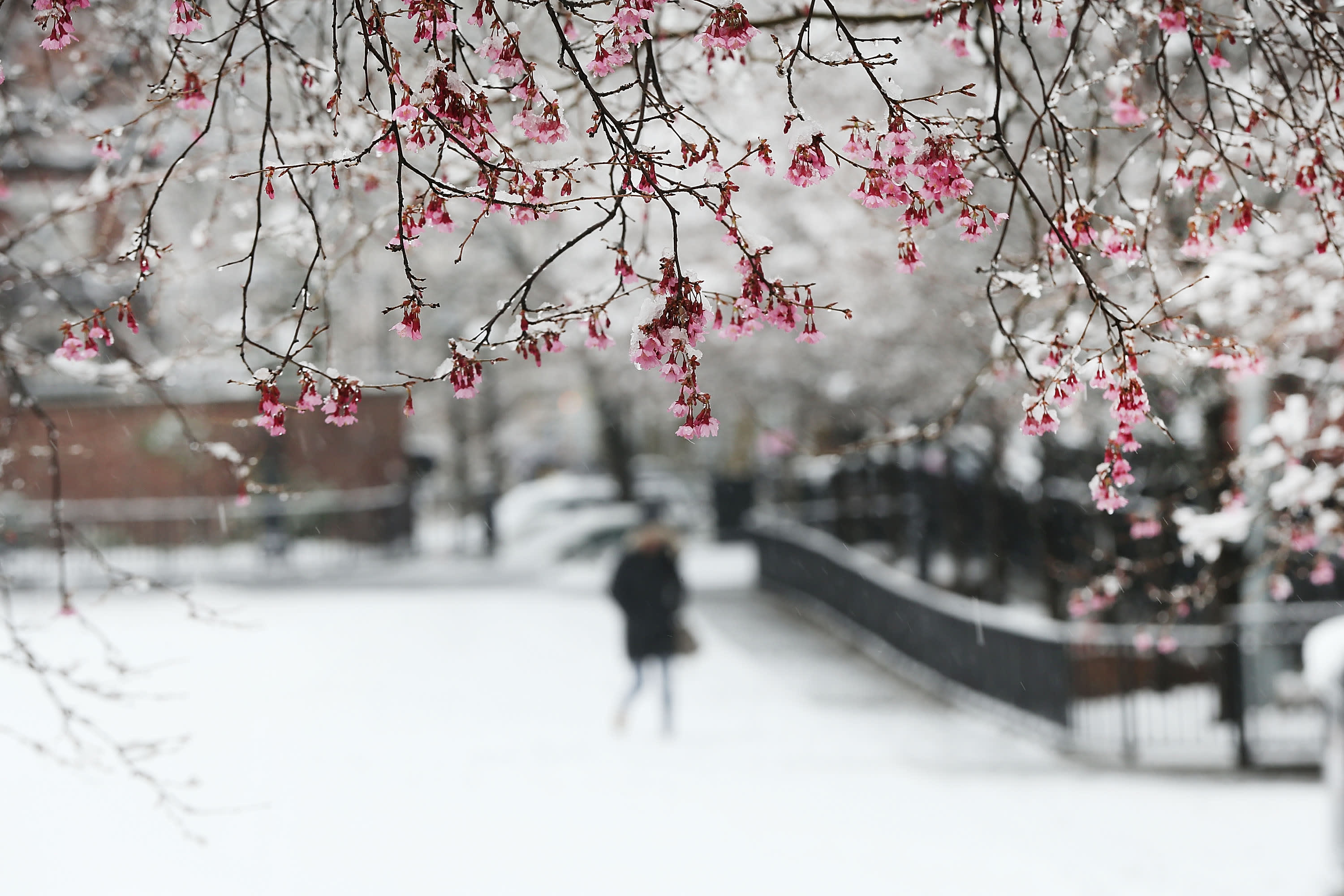
Flowers bud on trees as people walk through the snow in an early spring storm on April 2, 2018 in New York City.
Spencer Platt | Getty Images
A cold spell is set to hit the Eastern U.S. in the upcoming days, bringing along record-low temperatures in the month of May and frost and snowfall to some Northeast states.
Abnormally frigid temperatures in May will be brought over from the Arctic following a much hotter than normal January through March this year.
Temperatures will be especially extreme to the east of the Rockies and over the Great Lakes and Northeast, as temperatures over the weekend could drop 20 to 25 degrees Fahrenheit below normal highs.
“Over some areas this cold surge would lead to a late frost/freeze where the growing season has already started,” according to the National Weather Service forecast.
The expected blast of frigid air for the month of May is “one of the coldest modified polar air masses on record so late in the season,” according to Michael Palmer, a meteorologist at the Weather Company.
The frigid air traveling in from the Arctic is likely related to the breaking up of the spring polar vortex, a low-pressure expanse of cold air that sits in polar regions. When the vortex breaks, cold air escapes along the jet stream and brings low temperatures to the U.S.
Many areas in Northeast will stay in the 40s on Saturday and some locations in the northern Great Lakes and in mountain regions could stay in the 30s. Temperatures could also reach some record lows in the month of May, including a forecast low in the mid-twenties in cities like Detroit and Pittsburgh.
States in the mid-Atlantic region, from New York to Washington, D.C., could experience frost over the weekend and colder than normal temperatures through mid-May. New York highs are expected to only reach in the 50s on Saturday, some of the coldest on record for May.
An arctic weather system is expected to hit the northeast US this weekend.
Source: Weathermodels.com
There is emerging research that posits a link between the warming Arctic and more extreme weather in the middle latitudes, as scientists debate that as the Arctic warms up faster than the middle latitudes of the earth, it can cause displacement of the region’s cold air to the south. Periods of a weaker polar vortex in the winter months have increased over the past 37 years, according to a 2018 study.
“The cold is very unusual,” said Ryan Maue, a meteorologist at BAM Weather.
“It is difficult to pinpoint the cause-and-effect or correlation-causation with extreme weather events and climate change,” he said. “But changes in the behavior of the jet stream are becoming more accepted by scientists looking for physical reasoning behind what we are seeing on weather maps.”
Maue called the extended cold period a “climate change triple whammy” as the drop in temperatures will limit agricultural production, keep people inside with central heating and provide a more favorable outside environment for the coronavirus spread.
“This is not just some random one-off weather event but an obvious trend toward hyper-extreme atmospheric circulations outside the normal bounds of what we typically experience in May,” Maue said. “It’s not always hotter and dryer with rapid climate change, but also colder and wetter.”
Snow is also expected to fall in parts of interior New England over the weekend, with some residents of Pennsylvania, New Hampshire, northern Vermont and parts of Maine already reporting snow fall.
“Really impressive air mass for the time of year,” said Eric Fisher, a chief meteorologist at CBS Boston’s WBZ-TV News, in a tweet. “And not in the fun way.”
Leave a Reply